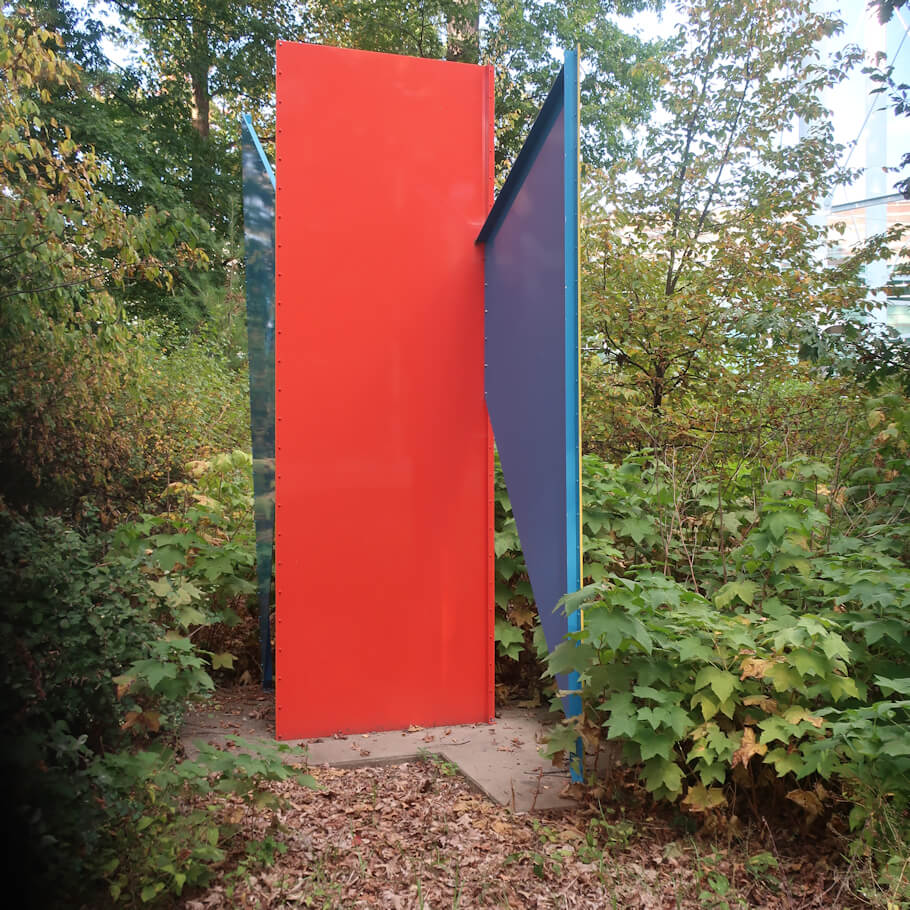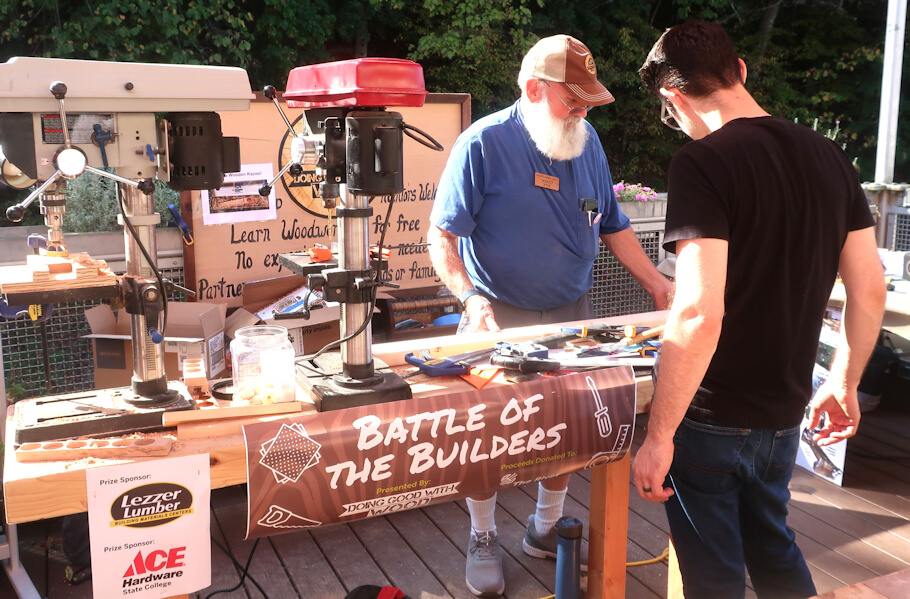Happy Valley: Pennsylvania's Accessible College Town
Author: Victor Block
Published: 2025/10/01 - Updated: 2025/10/10
Publication Type: Informative
Category Topic: Disability Travel America - Academic Publications
Page Content: Synopsis - Introduction - Main - Insights, Updates
Synopsis: This article explores how State College, Pennsylvania—nicknamed "Happy Valley"—earned its optimistic moniker during the Great Depression when Penn State University provided economic stability to the region, and examines why the name remains fitting today. The piece highlights how the area's combination of university culture, accessible attractions, and small-town charm creates a welcoming destination for diverse visitors, including seniors and people with disabilities who benefit from initiatives like sensory comfort kits available at participating businesses.
From the Palmer Museum of Art with its wheelchair-friendly gardens and walking paths to downtown's outdoor Art Walk featuring 37 public artworks, the region offers accessible cultural experiences alongside farm-fresh foods, historic sites like the Eagle Iron Works, and charming Victorian-era towns like Bellefonte. The article demonstrates how this central Pennsylvania destination balances educational enrichment, outdoor recreation, and local history while actively working to accommodate visitors of all abilities through thoughtful accessibility measures - Disabled World (DW).
Introduction
During the Great Depression era of the 1930s, people in a compact region of Pennsylvania managed to avoid the worst of the hard times. They occupied a canyon that separates the Appalachian Plateau from the ridge of the Appalachian Mountains. It's an area of rugged foothills, limestone valleys and dense forests.
Main Content
The major reason why this locale managed to escape the most dire consequences of the economic crash was the presence of Pennsylvania State University. That institution provided both jobs and financial stability to those who lived and worked nearby, even through the depth of the Depression.
Somewhat later, a husband-wife team of newspaper columnists began referring to State College, the town where Pennsylvania State University is located, as the Happy Valley. That name stuck.
I recently visited the community, and other nearby towns, and returned home with an understanding of why Happy Valley is an appropriate title, and description.
Penn State, as residents call it, on its own provides an atmosphere of youth, vibrancy and culture. Founded in 1855, it enrolls close to 90,000 students each year and has 19 campuses throughout Pennsylvania, the main site being in State College.
The Happy Valley Adventure Bureau is taking steps to help make the destination welcoming and accessible to neurodiverse individuals and their families. It has sponsored the production of sensory comfort kits which contain items that help people with a sensory processing disorder feel more comfortable when in public settings including restaurants, entertainment venues and other establishments. Businesses which offer the kits receive a window decal that makes it easy for customers and guests to identify them as sensory friendly establishments.
Penn State university and its surrounding grounds themselves offer an inviting choice of attractions. One is the collection at the Palmer Museum of Art. It spans centuries and represents a diversity of cultures, from American and African creations to works on paper.
The Museum is set in a lovely landscape that blends art, architecture and nature. Among a number of features are 10 acres of garden spaces, 14 acres of rolling meadows, colorful seasonal plantings, sculptures and gentle walking paths over which to explore the site.

Nearby, outdoor art turns the entire downtown heart of State College into an outdoor museum. An Art Walk trail leads to 37 murals, sculptures, statues, stained glass and other works.
Treats for the taste buds rather than the eyes are served up at the Penn State Berkey Creamery, the largest university ice cream maker in the world. The milk which is used comes from university cows and agricultural students make the delicious desert. Among rotating flavors are some unusual choices like White Out, Monster Mash and Peachy Paterno, named for the university's long-time football coach.
Those dairy delights hint at the variety of field-to-fork foods which add to the destination's appeal. Amish family farms provide beef, cheese and produce that are raised and grown with loving care.
The Heirloom Farmer offers milk, muffins, honey and more gathered from nearby fields. The history of the Way Fruit Farm began in 1872 with the planting of 1,000 apple trees, and continues under ownership of the sixth generation of the original owner's family.
History also lives at museums which recount various chapters of the area's story. Iron-making began in Pennsylvania as early as 1720 and evolved into a key industry because of the abundance of high-quality iron ore, limestone, and trees. While advances in technology resulted in the closing of most iron furnaces in the late 19th century, I was immersed in the heyday of that industry at the Eagle Iron Works and Curtin Village. The story of what became the region's leading industry is told there through hands-on demonstrations and walking tours. The Curtin Mansion engulfs visitors in the genteel ambience of an upscale Federal-era manor house.

The Boal Estate has been that family's home for over 200 years, and displays the original furnishings, artwork, and artifacts from around the globe. I found more intriguing the adjacent small, but imposing, Columbus Chapel. It houses what's said to be the most important collection of Christopher-related items in North America, including an Admiral's Desk which is believed to have belonged to the famous explorer.
The Matson Museum of Anthropology displays casts of ancient fossil life. Artifacts that demonstrate various aspects of farming and rural life are highlighted at the Pasto Agricultural Museum.
To me, tiny towns that are scattered about the area, each with its own character and appeals, are equally varied, and inviting. . Boalsburg is a walkable community that clings to its quaint village atmosphere. Philipsburg displays ties to the region's industrial past. Founded in 1795, Bellefonte (pronounced Bell-fon-tay) retains much of its original Victorian architecture.
Another magnet for tourism is a diverse list of year-round festivals that appeal to many interests. From street fair to music fest, farm celebrations to a craft market, they add to the long list of attractions that draw more than two million travelers a year to experience and enjoy what State College and its nearby neighbors have to offer.
Insights, Analysis, and Developments
Editorial Note: What distinguishes Happy Valley from countless other college towns across America is its genuine commitment to preserving history while embracing inclusivity—a rare combination that transforms tourism from passive sightseeing into meaningful engagement. The region's sensory-friendly business initiative represents more than corporate goodwill; it signals an understanding that true hospitality means removing barriers rather than simply providing amenities. When a destination spanning Depression-era iron furnaces, world-class university museums, and sixth-generation family farms also ensures that neurodiverse visitors can comfortably explore its attractions, it demonstrates that accessibility and authenticity need not be competing values. Perhaps the real lesson from Happy Valley is that communities thrive not by escaping economic hardship or chasing tourism dollars, but by building environments where everyone—students, seniors, families with special needs, history enthusiasts—can find their own version of happiness - Disabled World (DW). Author Credentials: Victor Block has been a travel journalist for many years, and has written for major newspapers, magazines and travel websites and served as an editor of Fodor's Travel Guides. He is a member of the Society of American Travel Writers and the North American Travel Journalists Association. Victor is a regular contributor of reviews to the Disabled World travel section. Visit Victors's biography for further insights into his background and expertise.
Author Credentials: Victor Block has been a travel journalist for many years, and has written for major newspapers, magazines and travel websites and served as an editor of Fodor's Travel Guides. He is a member of the Society of American Travel Writers and the North American Travel Journalists Association. Victor is a regular contributor of reviews to the Disabled World travel section. Visit Victors's biography for further insights into his background and expertise.